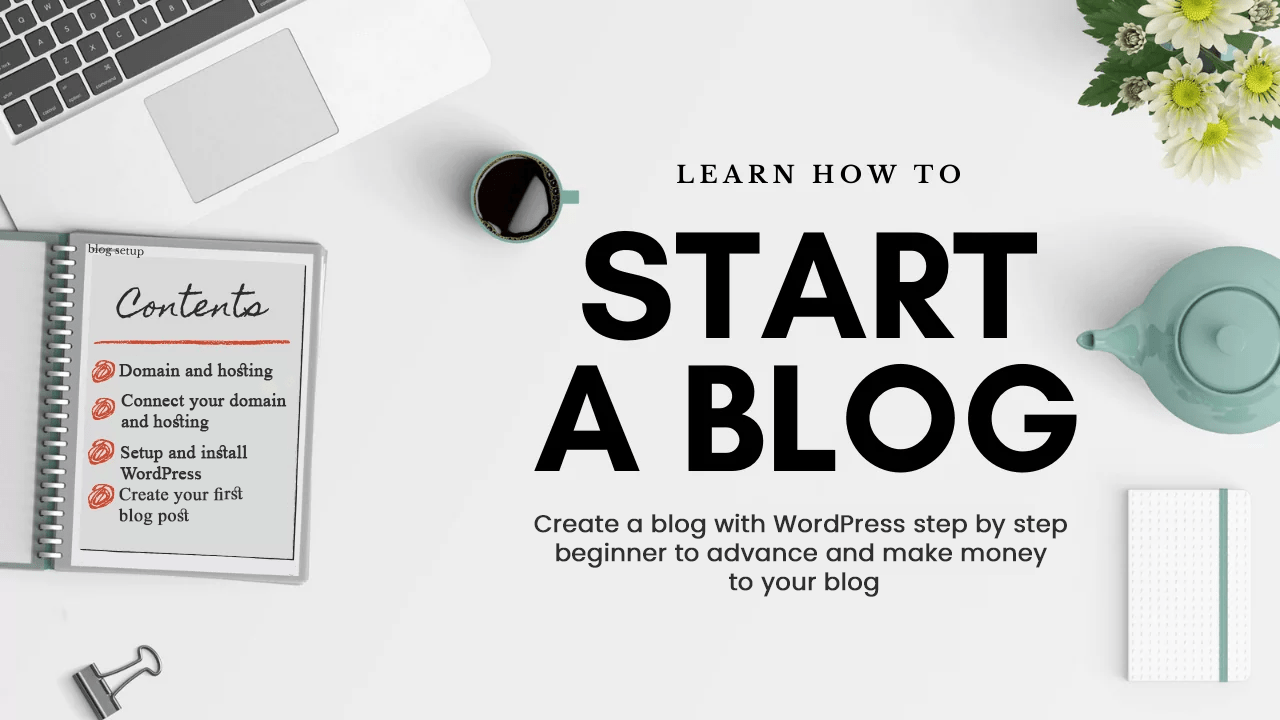Creating a blog using WordPress is a straightforward process that allows you to share your thoughts, ideas, and expertise with the world. In this comprehensive guide, we’ll walk you through the steps to create a blog using WordPress and explain how to log in to your WordPress blog dashboard.
Creating a Blog with WordPress:
- Choose a Domain and Hosting: Before you can create a blog with WordPress, you’ll need to choose a domain name for your blog and sign up for web hosting. Select a domain name that reflects the theme or topic of your blog and choose a reliable web hosting provider that offers WordPress hosting.

- Install WordPress: Most web hosting providers offer a one-click WordPress installation option, making it easy to set up your blog. Log in to your hosting account’s control panel (e.g., cPanel) and navigate to the “Softaculous” or “WordPress Installer” section. Follow the prompts to install WordPress on your domain.
- Access Your WordPress Dashboard: Once WordPress is installed, you can access your WordPress dashboard by navigating to your domain followed by “/wp-admin” in your web browser (e.g., yourdomain.com/wp-admin). Enter your WordPress username and password to log in to your dashboard.
- Choose a Theme: WordPress offers a wide range of free and premium themes that determine the appearance and layout of your blog. Navigate to the “Appearance” > “Themes” section in your WordPress dashboard to browse and install themes. Choose a theme that suits your blog’s style and branding.
- Customize Your Blog: After installing a theme, you can customize your blog’s appearance and functionality using the WordPress Customizer. Navigate to the “Appearance” > “Customize” section to access the Customizer, where you can modify settings such as colors, fonts, layout, and widgets.
- Create Your First Blog Post: To create your first blog post, navigate to the “Posts” > “Add New” section in your WordPress dashboard. Enter a title for your post, write your content using the WordPress editor, and add media such as images or videos if desired. Once you’re satisfied with your post, click the “Publish” button to make it live on your blog.
- Set Up Blog Categories and Tags: Organize your blog posts by assigning them to relevant categories and tags. Categories help users navigate your blog and find related content, while tags provide additional context and keyword associations. You can manage categories and tags in the “Posts” > “Categories” and “Posts” > “Tags” sections of your WordPress dashboard.
- Install Essential Plugins: WordPress plugins extend the functionality of your blog by adding features such as contact forms, social media sharing buttons, SEO optimization, and analytics tracking. Navigate to the “Plugins” > “Add New” section to browse and install plugins that meet your blog’s needs.
- Customize Your Blog’s Permalinks: Permalinks are the permanent URLs for your blog posts and pages. Customize your permalink structure to make your URLs SEO-friendly and descriptive. You can adjust permalink settings in the “Settings” > “Permalinks” section of your WordPress dashboard.
- Promote Your Blog: Once your blog is set up and populated with content, it’s time to promote it to attract readers. Share your blog posts on social media, engage with other bloggers in your niche, and optimize your content for search engines to increase visibility and traffic to your blog.

Logging In to Your WordPress Blog Dashboard:
To log in to your WordPress blog dashboard, follow these steps:
- Open your web browser and navigate to your blog’s login page by entering your domain followed by “/wp-admin” (e.g., yourdomain.com/wp-admin).
- Enter your WordPress username and password in the login form.
- Click the “Log In” button to access your WordPress dashboard.
Once logged in, you can manage your blog’s content, appearance, settings, and plugins from the WordPress dashboard.
Conclusion:
Creating a blog with WordPress is a simple and rewarding process that allows you to share your ideas and connect with audiences worldwide. By following the steps outlined in this guide, you can set up a professional-looking blog with WordPress and start publishing content that resonates with your audience. Whether you’re a beginner blogger or an experienced content creator, WordPress provides the tools and flexibility you need to bring your blog to life.
